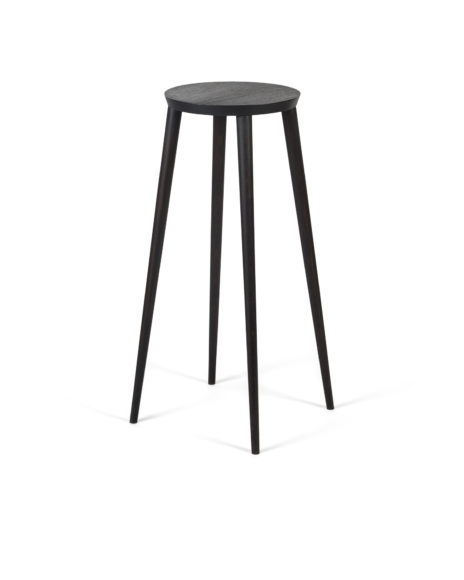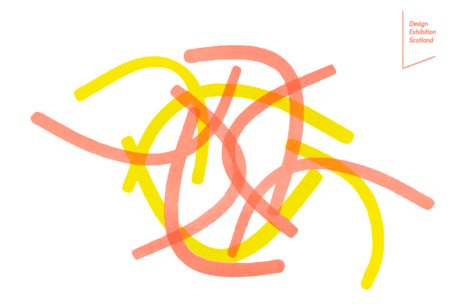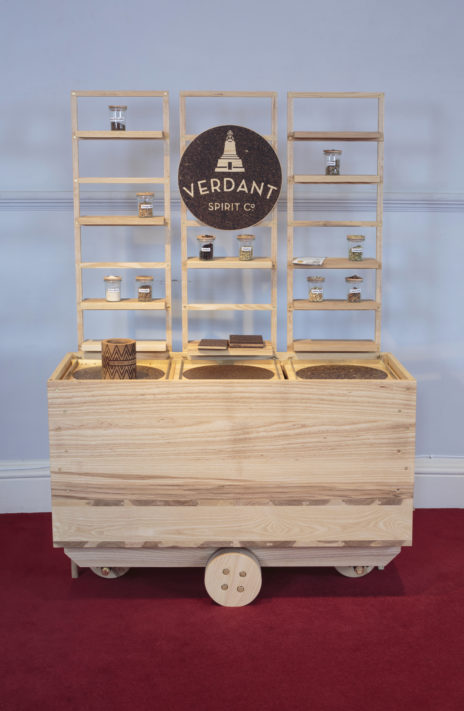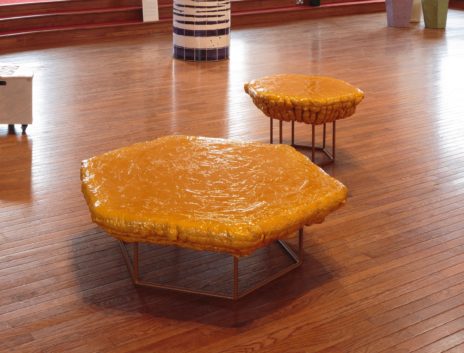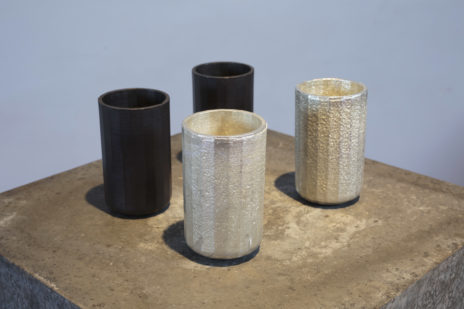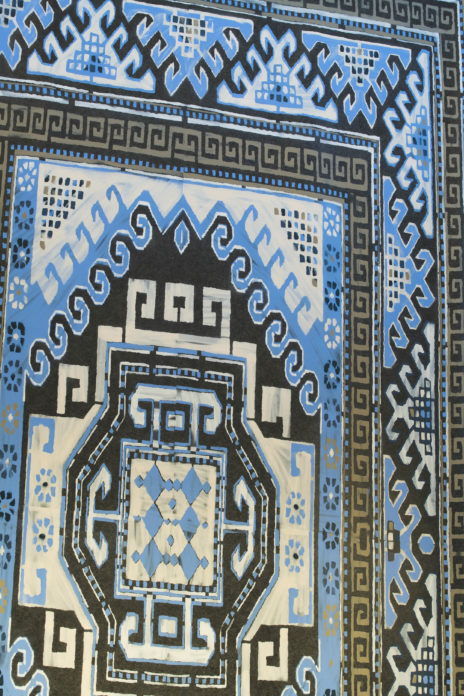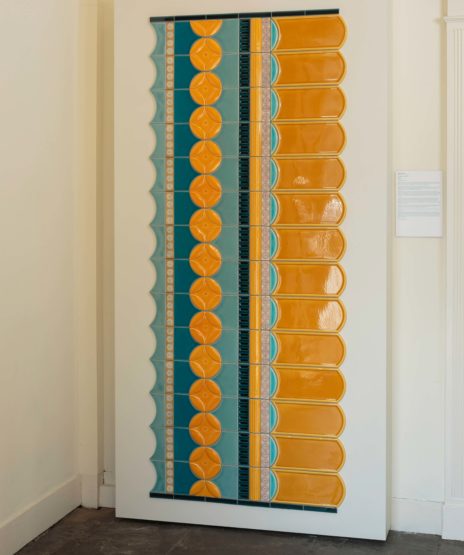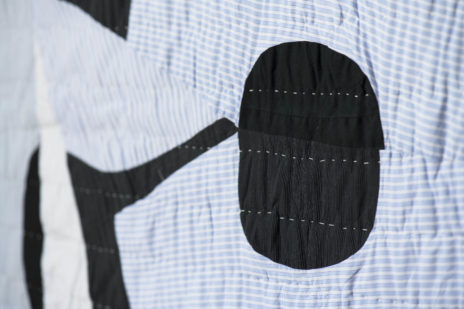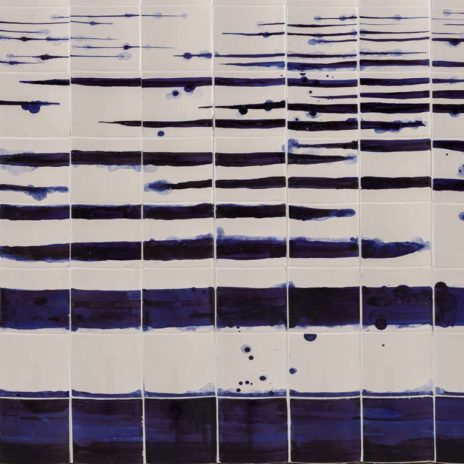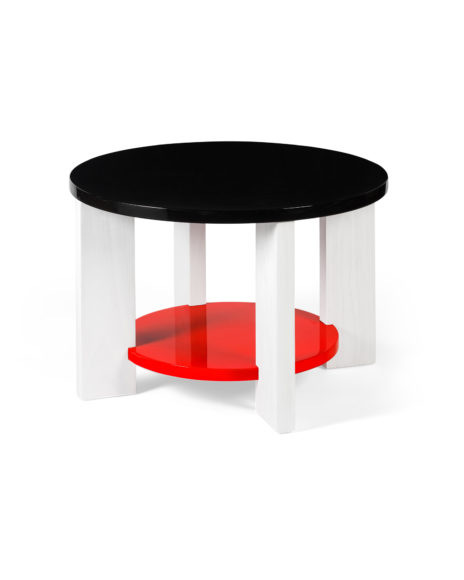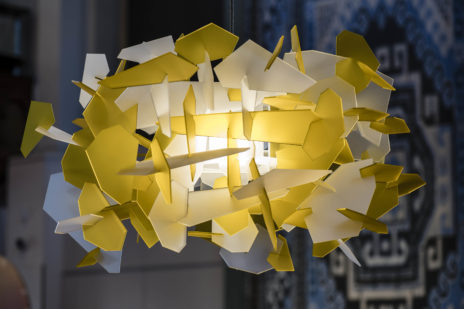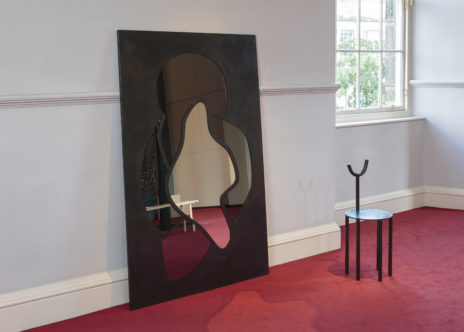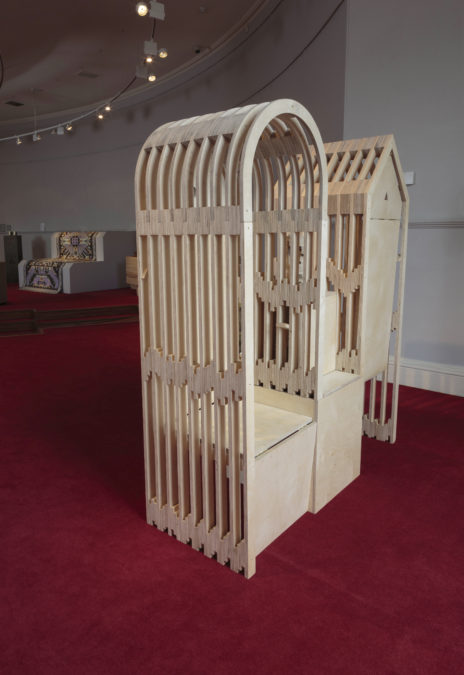Becky Šik
Inspired by modular furniture units, particularly mid 20th century German and Scandinavian designs, Becky Šik uses welded mesh to create light, geometric and adjustable shelving units. The powder-coated units can be combined with shelves made in varying sizes from a number of different materials such as wood, birch plywood (which can be hand finished with coloured edging) and steel, expanding the unit’s functions and varying its aesthetic. The hanging mechanisms offer a playful solution to height adjustability and adds colour. Becky Šik lives and […]
Read onNick Ross
Nick Ross explores the relationship between ‘fictional history’ and how it shapes our understanding of culture, identity and nationhood. Since living in Sweden, Ross has increasingly become interested in looking at how cultural icons and particular materials, shape our reading of a particular place or landscape. Ross is interested in investigating facts and happenings that have […]
Read onDaniel Brophy
Inspired by Scandinavian and Japanese design and craft, Daniel Brophy emulates a design approach that is pared down and lean. He always considers the rhythm of a piece: the space between each leg, the differing distances between each wooden spoke in his Side Chair. In doing this Brophy emphasises negative space, subtle angles and tapering lines. Brophy specialises in ebonising, a process of darkening wood. He applies a homemade solution […]
Read onIncluded Design
Included Design creates inclusively designed furniture for people with dementia and other cognitive and physical impairments. The Gingko Table has been designed with just a single central table leg, thus allowing users to sit easily at the table. The steel constructed central leg and the solid steel base prevent the table from tilting, while the solid walnut edging creates a strong contrast with the table’s surface so clearly marking the table’s edge. Tested and approved by people […]
Read onLynne MacLachlan
Lynne MacLachlan’s practice takes an experimental approach to digital design and fabrication tools, pushing their capabilities to produce intriguing jewellery and interior objects. State of the art 3D printing technologies are combined with meticulous hand-finishing techniques, such as dyeing, metalwork and construction, to explore optical illusions, geometry and colour effects. This hybridisation harnesses the precision and complexity of digital tools with craftsmanship […]
Read onPeter Holmes
The Ellipse Armchair by Peter Holmes is inspired by the curves and drama of Art Deco architecture and design. Wanting to create a chair that would envelop the sitter, Holmes constructed a low-slung wooden frame that combines beech and birch plywood with turned beech legs. A consideration from the start was the upholstery fabric. The fabric needed to have […]
Read onLucy Grainge
The DES 2019 Handout is designed by Lucy Grainge and forms part of an ongoing body of work informed by swimming pools and the woggle, a lozenge-shaped float that acts as a swimming aid. As a part-time swimming teacher, Grainge frequently uses woggles to provide support and safety for novice swimmers. Long fascinated by water, the human body in water and how the flexibility of the woggle allows it to echo and support the human form, Grainge’s pattern-based design […]
Read onRachel Adams
Frequently referencing Art Deco, Adams employs materials more readily associated with industrial processes than the decorative arts. The reverse is true of White Roses, an upholstered bench originally commissioned by The Collection Museum in Lincoln. Adams created the piece in response to a painting of the same name by the late 19th century French painter, Henri Fantin-Latour. Using green and white tie dye, matching the colour scheme of the original painting, Adams creates an unusual upholstery pattern that echoes marbling, a kind of trompe l’oeil on fabric. By elevating the industrial, the non-valuable, DIY and everyday materials, Adams teases at cultural […]
Read onAymeric Renoud
On moving to Dundee from France in 2013, Aymeric Renoud became fascinated by Scotland’s brewing and distilling industry and in particular, draff, the so-called unwanted leftover ‘wet grains’. Often used to supplement animal feed, Renoud began to explore the possibilities of using draff as material in furniture design. He embarked on a four-year programme of research and development before launching draff studio in Dundee in 2017. At DES 2018, Renoud debuted his first piece of furniture, a draff stool. Renoud has now further refined the process of turning the spent […]
Read onSteff Norwood
Steff Norwood works between the disciplines of design and sculpture. His work is hybrid by nature. He imposes a singular aesthetical approach through his choice of materials, form and colour. This process is applied to both conceptual and commercial projects. Paint and the painted surface is omnipresent in Norwood’s work. Norwood draws inspiration from diverse sources such as folk […]
Read onHarry Morgan
Pewter, once known as ‘poor man’s silver’, is thought to have first been made in the Near East during the Bronze Age around 3000BC. A malleable alloy principally consisting of tin and a small amount of copper, metallurgists have speculated that pewter could have been discovered by chance. Looking back to a time when drinking cups were frequently made of pewter and were treasured personal items, Morgan’s Ode to Pewter presents a collection of functional vessels both cast in pewter and bronze. Simply cast using a camping stove and a frying […]
Read onBernie Reid
Bernie Reid sources discarded pieces of linoleum and vinyl to make ‘rugs’. Referencing Persian and Caucasian carpet designs and early 20th century decorative schemes, Reid reinvents and repurposes traditional patterns and forms to paint in trompe l’oeil (a French term translating as to ‘deceive the eye’) directly onto lino remnants. Reid is also part-inspired by the long-standing Eastern European tradition of painting ‘rugs’ directly on to stone floors or floorboards by using hand-cut stencils. Bernie Reid lives and works in Edinburgh. He studied painting at Edinburgh […]
Read onFrances Priest
Cultural histories of ornament and decoration frequently inspire Frances Priest’s collections of coloured ceramic objects. Combining a studio-based practice with site-specific projects, residencies and commissions, Priest’s work is rooted in an investigation of both place and its surrounding community of people. For Design Exhibition Scotland, Priest has recreated a section of The Tiled Corridor. The Tiled Corridor was commissioned by Edinburgh & Lothians Health Foundation in 2016 for The Royal Edinburgh Hospital. The ELHF aims to improve the physical and mental well-being […]
Read onArrange Whatever Pieces Come Your Way
Arrange Whatever Pieces Come Your Way was established in 2016 by Sheelagh Boyce and Annabelle Harty. Whilst taking inspiration from traditional American and Japanese quilt making, Boyce and Harty’s work is largely informed by the landscape and the built environment they travel in and through; and their shared knowledge of architecture, art, food and fashion. The pieces of fabric they assemble to create […]
Read onTania Kovats
For 2019, Design Exhibition Scotland has commissioned three prototype drinking fountains. Once a common sight in Britain’s towns and cities – many were manufactured by Walter Macfarlane Ltd at the Saracen Foundry in Glasgow – they were beautifully crafted, a generous and civic celebration of free and clean drinking water. Design Exhibition Scotland wishes to revive the drinking fountain for our […]
Read onGoodd Ltd / Uncontrollable Urge
This small table is inspired by Gordon Webster, an early 20th century stained glass artist. Webster made a similar small table with wood taken in exchange for stained glass work. It sat in Webster’s drawing room with a gramophone on top and a collection of classical records stored beneath. The new table is a homage to […]
Read onAndrew Miller
Twilight is a new series of illuminated suspended sculptures by Andrew Miller. Comprising numerous angled pieces of frosted Perspex, they grew out of a series of pen and ink drawings and Miller’s interest in sculptured forms in space. Andrew Miller’s also shows a new light work entitled Piece. It takes the form of an irregular hexagonal shape, similar to one of the […]
Read onKevin Pollock | DES 2019
Kevin Pollock’s suite of furniture explores the boundaries between sculpture and functional forms that appear to have the characteristics of furniture. Evolving out of recent ideas and sculptural works, Pollock finds the act of making essential to his practice. Investigating the characteristics of materials, and how they inform form and function and an object’s physical appearance and presence, Pollock believes in ‘playing’ with materials. PU foam […]
Read onc.a. walac
Room for Irregularities is c.a.walac’s first furniture collection. Comprising a series of functional sculptural objects made in hand blackened steel, their forms are inspired by the contours of lochs and the landscape of the Scottish Highlands. Mirror was informed in particular by a night-time drive taken by walac in Loch Lomond and seeing the reflection of a full moon on still dark water. Glasgow’s industrial past and the geometry of steel structures have also given impetus to walac’s work and an interest in how these two very different landscapes can […]
Read onLee Ivett
With contemporary society’s growing addiction to ‘sharing’ images, opinions and tirades through the digital world of social media, Ivett considers what it means to create an actual physical space from which we can share, with care and in person. Confessional speculates on a space where everyone has the right to be heard along with the obligation to listen. This model starts a process of exploration into what form, […]
Read on
